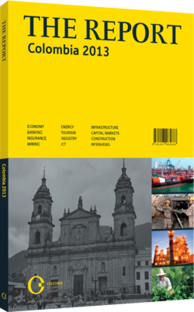Floor space: Efforts to boost gross leasable area drive development
Similar to growing economies in the region, Colombia’s shopping mall segment is expanding in both sales and nationwide presence. According to Acecolombia, the national mall association, annual sales had reached COP26trn ($15.6bn) by the end of 2012, representing 13% year-on-year growth. The number of malls with a surface area larger than 5000 sq metres has tripled since the start of the millennium, totalling 206 in 2012. In 2012 six new malls – at a combined value of $520m – opened their doors in cities such as Bogotá, Santa Marta, Cartagena and Bucaramanga. For 2013 at least two additional projects are scheduled to be completed. In addition, 15 projects are undergoing expansion or modernisation at a value of around $310m.
FASIONABLE TIMING: Development is partly supported by high interest among fashion brands in securing large, modern retail surfaces. Over the course of 2012 more than 25 clothing brands entered the market, including Forever 21, Gap, Victoria’s Secret, Ripley, Perry Ellis and Banana Republic, while other existing retailers are expanding. One example is La Polar, a Chilean department store that opened its fifth shop in Colombia in 2012 and has plans to open 18 more in cities such as Bogotá, Cali, Barranquilla, Cartagena and Pereira.
Whereas urban areas maintain the highest growth rates, shopping mall development has spread to numerous mid-sized cities. While in 2007, 16 cities were home to a mall, in 2012 that number had risen to 43. Moreover, there are 47 projects currently in development, spread over 24 cities, including mid- and small-sized towns such as Ibagué, Montería, Florencia, Soledad, Neiva, San Gil and Yopal. Besides geographic diversification, shopping malls are also catering to an increasingly broad clientele. Having initially catered to higherincome brackets, exponential retail growth has been experienced in all economic strata. “Shopping centres are no longer viewed as a retail option exclusively for the rich.” Carlos Betancourt, the executive director of Acecolombia, told OBG. According to a recent survey by the association, some 12% of Colombia’s middle class shops for clothing in malls, an indication of greater socio-economic diversity among mall users which supports developers’ focus on some smaller cities.
PRIDE OF PURPOSE: Shopping malls have become more diverse and multifunctional. Under the pressure of competition, developers are opting for multipurpose models, comprising hotels and conference facilities. One example is the recently opened Titan mall in Bogotá. Another trend is the location of larger shopping malls in newly developed areas as opposed to smaller structures in downtown urban centres. In fact, the country’s biggest mall to-date is being developed in Chía, a rapidly growing community north of the capital. According to local media reports, the new facility, named Costanera, will cover a surface of 12 ha offering commercial space to 200 retail businesses. It will also include a convention centre of 8000 sq metres, a Holiday Inn Express, a medical facility and office space.
Construction is scheduled to start in December 2013.
Mall ownership is also changing, as foreign investors dominate the sector, malls are increasingly in the hands of a single or a small group of owners. One example is Chilean department store chain Falabella, which has plans to invest $3.34bn in the construction of 204 stores and 16 shopping malls. According to Acecolombia, around half of the shopping malls under development will operate under single or limited ownership.
Despite strong growth and heightening competition, mall density is still low. According to Acecolombia, Colombia currently has an average of 7.3 sq metres of retail space per 100 inhabitants, compared to 28 in Chile, 32 in Mexico and 187 in the US. Moreover, Fenalco, the national trade association, found that vacant retail space inside malls barely reached 6% in 2011. While this is expected to continue attracting investors, retail organisations like Fenalco and Asocentros, a Medellí nbased mall association, have highlighted the risks of rapid capital growth and have called for scrutiny of new projects to ensure more extensive feasibility studies are conducted before investment decisions are made.
You have reached the limit of premium articles you can view for free.
Choose from the options below to purchase print or digital editions of our Reports. You can also purchase a website subscription giving you unlimited access to all of our Reports online for 12 months.
If you have already purchased this Report or have a website subscription, please login to continue.

